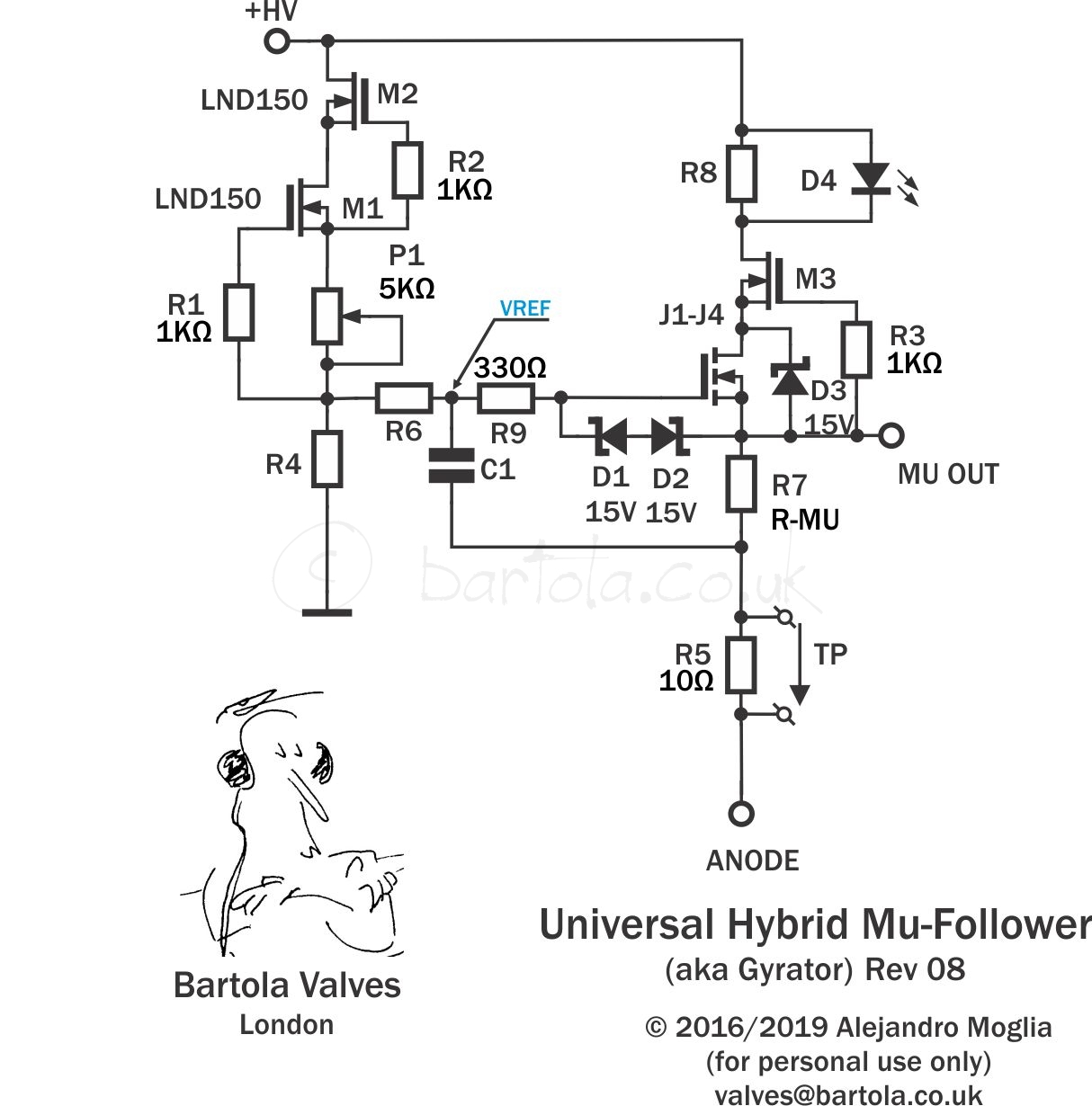I'm researching various options for replacing anode choke in tube preamp stage.
As far as I can understand, choke basically works as a "sort of" CCS at audio frequencies. I looked into various CCS designs and stumbled upon something called a gyrator anode load. Here is the common schematic of such circuit:

I'm struggling with the righthand part of this circuit. I understand the cascoded CCS to the left, I also suppose that P1 is for setting the correct current for MOSFET zero tempco point, and a way to set it is to read the VREF voltage and adjust P1.
Now, with the righthand part, I really need clarification on R6/C1 and output options. The output can be taken from the tom of R7 or from the bottom of R7. I believe that the top output is the one I should use, but I'm not completely sure.
Also, do I set anode current (or voltage)? Is it dependent on R7 (which is suggested to be approximately 1/gm)?
As far as I can understand, choke basically works as a "sort of" CCS at audio frequencies. I looked into various CCS designs and stumbled upon something called a gyrator anode load. Here is the common schematic of such circuit:

I'm struggling with the righthand part of this circuit. I understand the cascoded CCS to the left, I also suppose that P1 is for setting the correct current for MOSFET zero tempco point, and a way to set it is to read the VREF voltage and adjust P1.
Now, with the righthand part, I really need clarification on R6/C1 and output options. The output can be taken from the tom of R7 or from the bottom of R7. I believe that the top output is the one I should use, but I'm not completely sure.
Also, do I set anode current (or voltage)? Is it dependent on R7 (which is suggested to be approximately 1/gm)?



